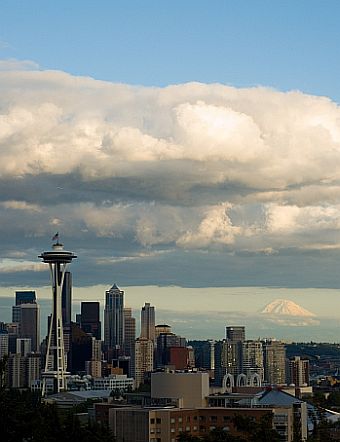ozone
-
The people speak out in favor of stronger smog standards
I’ve been hospitalized many times with asthma attacks. It’s scary when you can’t catch your breath. When I was young, going to the hospital with asthma was a monthly thing. Now I’m on an adult dose of asthma medicine and the only other way to manage the asthma is to limit my outdoor activities. That’s […]
-
It's cold outside — What happened to global warming?
We've heard a lot of talk lately from deniers that cold temperatures are proof that there is no such thing as global warming.
-
Failing grades issued for air quality in Seattle, other major cities
Photo: Peter Davis via FlickrIf Seattle were an 8th grader, she’d probably be grounded right now. And considering the poor scores the city received on its air quality report card (an F for ozone pollution and a C for particulates), it might not be a bad idea if we all stay inside for a while. […]
-
Sweden’s ozone layer thickest in decades: institute
STOCKHOLM — The ozone layer over Sweden was thicker in February than it has been in decades, the Swedish meteorological institute SMHI said on Tuesday. Measurements taken at SMHI’s station in Norrkoeping, just south of Stockholm, showed the ozone layer was at its thickest in February since recordings there began in 1988, with a measurement […]
-
Umbra on aerosols
Dear Umbra, Love the column. Keep up the great stuff! A question: My co-workers and I are suspicious of buying spray cans, even though we know they no longer contain CFCs. We suspect that aerosol cans contain HCFCs — hydrochlorofluorocarbons — which are proving to be dangerous as well, this time as greenhouse gases. Do […]
-
Compressed air cans are contributing to ozone destruction
Photo: Jeff Mo There was an interesting post a while ago about the havoc created by compressed air cans — you know, the ones you use to dust off your keyboard. Who knew that they were full of intensely powerful greenhouse gases? I sure didn’t, but thanks to Eric de Place, now I do — […]
-
Science: Geo-engineering scheme damages the ozone layer
Science has published a major new study, "The Sensitivity of Polar Ozone Depletion to Proposed Geoengineering Schemes" ($ub. req'd). The study finds:
The large burden of sulfate aerosols injected into the stratosphere by the eruption of Mount Pinatubo in 1991 cooled Earth and enhanced the destruction of polar ozone in the subsequent few years. The continuous injection of sulfur into the stratosphere has been suggested as a "geoengineering" scheme to counteract global warming. We use an empirical relationship between ozone depletion and chlorine activation to estimate how this approach might influence polar ozone. An injection of sulfur large enough to compensate for surface warming caused by the doubling of atmospheric CO2 would strongly increase the extent of Arctic ozone depletion during the present century for cold winters and would cause a considerable delay, between 30 and 70 years, in the expected recovery of the Antarctic ozone hole.
Of course, this geo-engineering scheme has lots of other problems. An earlier study noted:
-
Gore: What we can learn from the ozone hole
Kelly Fergusson, mayor of Menlo Park, Calif. ("investment capital of the world!"), asks: we’ve overcome huge environmental challenges like DDT and the ozone hole before. What can we learn from those successes? First, Gore causes me to do a double take by saying that his mother used to read to he and his sister from […]
-
What the ozone hole tells us about the science of climate change
The atmospheric sciences community is excitedly discussing new results that potentially cast doubt on our understanding of the chemistry of the Antarctic ozone hole. The ozone hole is formed when two molecules of chlorine monoxide react with each other to form what is known as the chlorine dimer, ClOOCl, and that molecule is subsequently blasted apart by sunlight to release the chlorine atoms. New results suggest that this reaction is actually much slower than previously suggested. If this is true, it suggests that there is some important chemical process destroying ozone in the Antarctic stratosphere that we do not know about.
In reaction to this unexpected scientific result, stratospheric chemists are attacking the problem, trying to think up potential mechanisms that reconcile these new measurements with everything else we know about the chemistry of the stratosphere. As a former stratospheric chemist, I can say that I have not seen this level of excitement in the stratospheric chemistry community in at least 10 or 15 years.
So what does this tell us about the science of climate change? It tells us that many of the criticisms of climate science coming from the skeptics are dead wrong.
